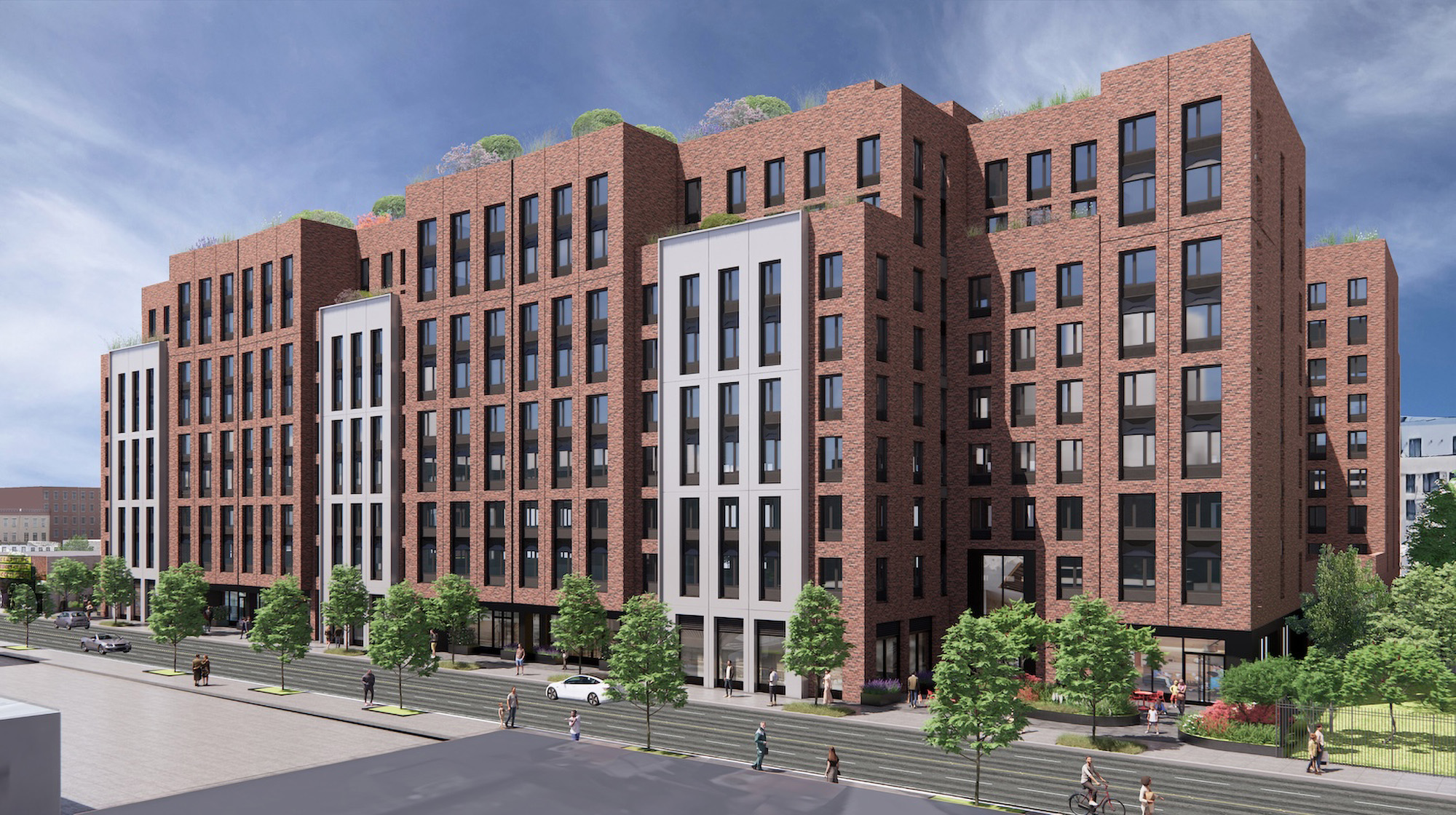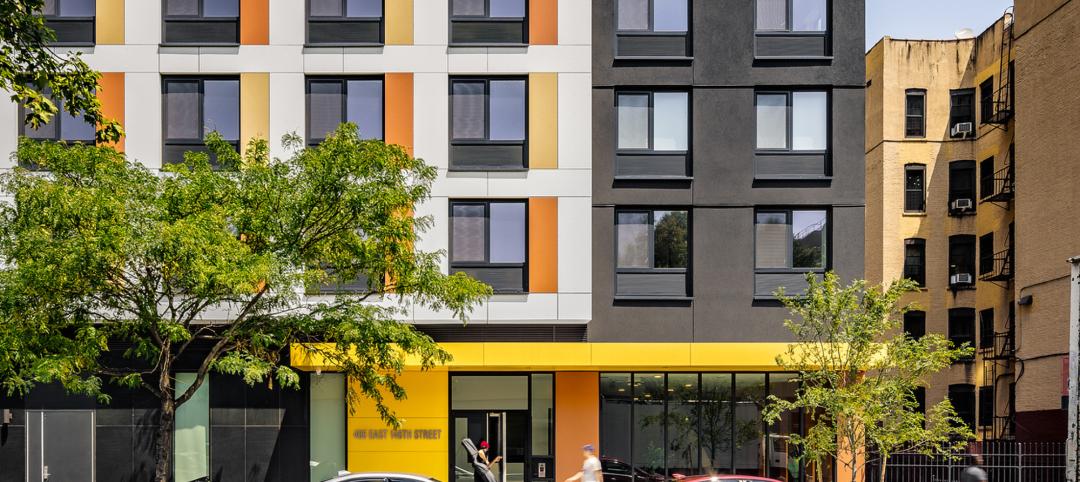Construction recently began on a project to create 328 units of permanently affordable and supportive homes for low-income and formerly homeless populations in Brooklyn, N.Y. The $237.9 million Clarkson Estates affordable housing development will be home to youth aging out of foster care, formerly incarcerated individuals, formerly homeless young adults, and formerly homeless families.
The project by CAMBA Housing Ventures, Inc. (CHV) targets Passive House certification and will offer more than 30,000 sf of community facility space including a broad array of onsite supportive services and recreational opportunities as well as nearly 15,000 sf of parking.
Passive House project elevates affordable housing in Brooklyn
Clarkson Estates is part of New York’s $1.4 billion Vital Brooklyn initiative, a community development program targeting and investing in eight integrated areas including healthcare and housing. The program’s aim is to establish a new standard for addressing chronic economic and health disparities in Central Brooklyn’s underserved communities. The initiative will create 4,000 affordable homes.
Clarkson Estates will transform the site that was formerly owned by The Health Science Center at Brooklyn Foundation, Inc. and used as a parking lot for SUNY Downstate Medical Center. CHV’s focus is on co-locating housing and healthcare to combine affordable housing and community resources to address the socio-economic determinants of health. CHV’s proven model of supportive services, nearby healthcare and on-site amenities helps transition families from survival to stability and success. CHV will provide tailored case management. Onsite community resources are focused on supporting economic development and workforce training, youth development and violence prevention, adult education and financial literacy, access to healthy food, recreation, and health and wellness.
The project will offer a mix of studios, one-, two-, and three-bedroom units at 30%, 40%, 50%, and 70% area median income (AMI). Clarkson Estates will be a 9-story brick and metal panel contextual building and feature a double-height lobby at both the residential and community facility entrances with plentiful access to natural light throughout common spaces. Amenities will include free Wi-Fi in units, 24/7 front desk security to enhance safety, extensive landscaping including courtyards and rooftop terraces to encourage socializing, a teaching kitchen for nutrition workshops, children’s playroom, computer room, indoor fitness center, laundry on every floor, flexible community rooms, bike storage, live-in superintendent, and local art throughout the building.
On the Building Team:
Owner and/or developer: CAMBA Housing Ventures, Inc.
Architect of record, design architect: CetraRuddy
MEP engineer: Dagher Engineering
Structural engineer: DeSimone Consulting Engineers
General contractor/construction manager: Bruno Frustaci Contracting
Related Stories
Multifamily Housing | Oct 28, 2024
A case for mid-rise: How multifamily housing can reshape our cities
Often referred to as “five-over-ones,” the mid-rise apartment type is typically comprised of five stories of apartments on top of a concrete “podium” of ground-floor retail. The main criticism of the “five-over-one” is that they are often too predictable.
Adaptive Reuse | Oct 22, 2024
Adaptive reuse project transforms 1840s-era mill building into rental housing
A recently opened multifamily property in Lawrence, Mass., is an adaptive reuse of an 1840s-era mill building. Stone Mill Lofts is one of the first all-electric mixed-income multifamily properties in Massachusetts. The all-electric building meets ambitious modern energy codes and stringent National Park Service historic preservation guidelines.
MFPRO+ News | Oct 22, 2024
Project financing tempers robust demand for multifamily housing
AEC Giants with multifamily practices report that the sector has been struggling over the past year, despite the high demand for housing, especially affordable products.
MFPRO+ Research | Oct 15, 2024
Multifamily rents drop in September 2024
The average multifamily rent fell by $3 in September to $1,750, while year-over-year growth was unchanged at 0.9 percent.
Affordable Housing | Oct 4, 2024
3 new affordable housing projects for October 2024
As affordable housing continues to grow, more projects are looking to diversify their footprint by adding mixed-use components, community areas, and more.
MFPRO+ News | Sep 24, 2024
Major Massachusetts housing law aims to build or save 65,000 multifamily and single-family homes
Massachusetts Gov. Maura Healey recently signed far-reaching legislation to boost housing production and address the high cost of housing in the Bay State. The Affordable Homes Act aims to build or save 65,000 homes through $5.1 billion in spending and 49 policy initiatives.
Adaptive Reuse | Sep 12, 2024
White paper on office-to-residential conversions released by IAPMO
IAPMO has published a new white paper titled “Adaptive Reuse: Converting Offices to Multi-Residential Family,” a comprehensive analysis of addressing housing shortages through the conversion of office spaces into residential units.
Legislation | Sep 9, 2024
Efforts to encourage more housing projects on California coast stall
A movement to encourage more housing projects along the California coast has stalled out in the California legislature. Earlier this year, lawmakers, with the backing of some housing activists, introduced a series of bills aimed at making it easier to build apartments and accessory dwelling units along California’s highly regulated coast.
Resiliency | Sep 3, 2024
Phius introduces retrofit standard for more resilient buildings
Phius recently released, REVIVE 2024, a retrofit standard for more resilient buildings. The standard focuses on resilience against grid outages by ensuring structures remain habitable for at least a week during extreme weather events.
Adaptive Reuse | Aug 29, 2024
More than 1.2 billion sf of office space have strong potential for residential conversion
More than 1.2 billion sf of U.S. office space—14.8% of the nation’s total—have strong potential for conversion to residential use, according to real estate software and services firm Yardi. Yardi’s new Conversion Feasibility Index scores office buildings on their suitability for multifamily conversion.


















